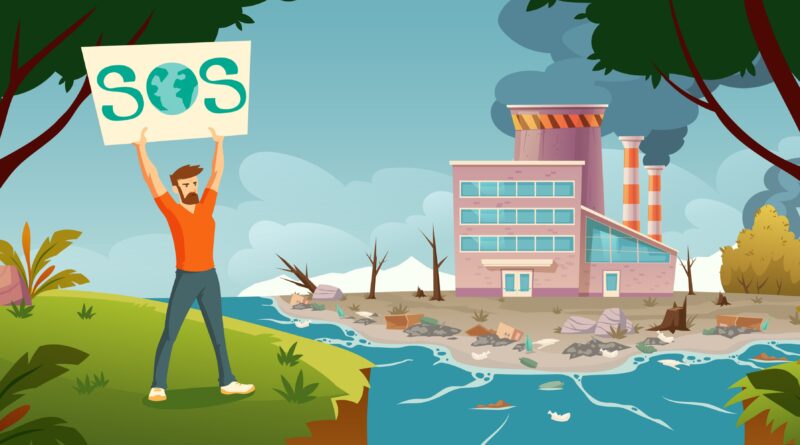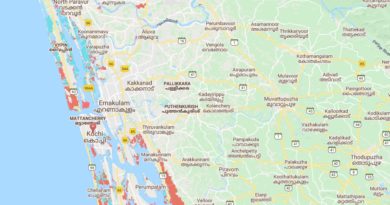What are the key changes in the Environment Impact Assessment Notification 2020?
Will environment regulation be weakened?
G. Ananthakrishnan | The Hindu
The story so far: The Ministry of Environment, Forest and Climate Change (MoEF&CC) has published the draft Environment Impact Assessment (EIA) Notification 2020, with the intention of replacing the existing EIA Notification, 2006 under the Environment (Protection) Act, 1986. The government wants to incorporate modifications made to the regulations through amendments in the interim period. An EIA makes a scientific estimate of the likely impacts of a project, such as a mine, irrigation dam, industrial unit or waste treatment plant. There is also a provision for public consultation in the rules, including a public hearing at which the local community and interested persons can give opinions and raise objections, based on the draft EIA report prepared by experts for the project.
How does the draft EIA Notification differ from the one now in force?
Among the major departures from existing regulations is the removal of several activities from the purview of public consultation. A list of projects has been included under Category B2, expressly exempted from the requirement of an EIA (Clause 13, sub cl. 11).
The projects under this category include offshore and onshore oil, gas and shale exploration, hydroelectric projects up to 25 MW, irrigation projects between 2,000 and 10,000 hectares of command area, small and medium mineral beneficiation units, small foundries involving furnace units, some categories of re-rolling mills, small and medium cement plants, small clinker grinding units, acids other than phosphoric or ammonia, sulphuric acid, micro, small and medium enterprises (MSMEs) in dye and dye intermediates, bulk drugs, synthetic rubbers, medium-sized paint units, all inland waterway projects, expansion or widening of highways between 25 km and 100 km with defined parameters, aerial ropeways in ecologically sensitive areas, and specified building construction and area development projects.
Also Read: All You Need to Know About EIA-2020
The projects in this list are, under existing norms, identified on the basis of screening by Expert Appraisal Committees, rather than being exempted through listing in the Schedule. Also, coal and non-coal mineral prospecting and solar photovoltaic projects do not need prior environmental clearance or permission in the new scheme.
What are the apprehensions?
There is apprehension that the exemption from EIA and public consultation for listed B2 category activity and expansion and modernisation projects will seriously affect the environment, since these will be carried out without oversight. Combined with a new provision for post-facto environmental clearance (of projects executed without prior clearance), this would further weaken protections. Moreover, the notice period for public hearing has been cut from 30 days to 20 days. This will make it difficult to study the draft EIA report, more so when it is not widely available or provided in the regional language.
Similarly, for project modernisation and expansion, the norms in Notification 2020 are liberal, with only those involving more than 25% increase requiring EIA, and over 50% attracting public consultation.
Also Read: Draft EIA Notification is an attempt to weaken regulation, silence affected communities
Under the proposed changes, project proponents need to submit only one annual report on compliance with conditions, compared to the existing two. The move is seen as retrograde, because the CAG found in 2016 that the deficiency in semi-annual compliance reporting was between 43% and 78%, while failure to comply with conditions ranged from 5% to 57%. Non-compliance was encountered particularly in river valley and hydroelectric power projects and thermal power projects. After the gas leak at LG Polymers in Visakhapatnam on May 7, the Environment Ministry told the National Green Tribunal that the unit lacked environment clearance, exposing the low effectiveness of rules.
How would the new rules enable post-facto approval of violations?
The MoEF&CC cites its own order of March 14, 2017 enabling appraisal of projects involving violations — where construction had begun or expansion or modernisation was carried out without clearance — and an order of the Jharkhand High Court asking for consideration of a case on merits, independent of penal action for violation, to introduce a beneficial scheme for violators.
The EIA Notification 2020 excludes reporting by the public of violations and non-compliance. Instead, the government will take cognisance of reports only from the violator-promoter, government authority, Appraisal Committee or Regulatory Authority. Such projects can then be approved with conditions, including remediation of ecological damage, which, again, will be assessed and reported by the violator (and not an unconnected agency), although Central Pollution Control Board guidelines must be used.
How does the draft notification compare with global norms?
EIA rules must meet the requirements of the precautionary principle of avoiding harm, and intergenerational equity. The European Union, as an evolving example, has modified its processes in accordance with the Aarhus Convention, 1998, which stipulates that environmental rights and human rights are linked, the present generation owes an obligation to future generations, sustainable development can be achieved only through the involvement of all stakeholders, government accountability and environmental protection are connected, and interactions between the public and public authorities must take place in a democratic context. The EU Directive on EIA includes climate change and biodiversity concerns.
The rules in India, including EIA 2006, it can be argued, privileged the interests of the project proponent by whittling down public consultations, accepting flawed and faulty EIA reports resulting from external influences, and ignoring the non-renewable nature of resources. Notification 2020 deepens the impact of that paradigm.




